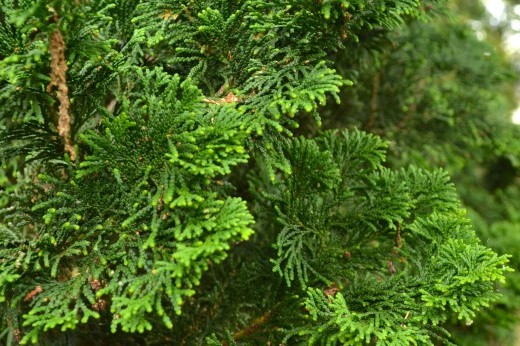Topics
Special Series
Plant Choices
-
Mexican Oregano—A Tasty Twist on an Age-Old Flavor
After a lifetime of growing edible plants, I've come to the conclusion that "oregano" should be a botanical category of aroma and taste rather than the common name for any one herb.
By Scott D. Appell -
Heavenly Hibiscus: Long-Lived, Easy-Care Beauties
Hibiscus are getting more popular. Vigorous. Tough. Easy to grow. Long-lived. Their spectacular flowers bloom in a rainbow of colors throughout the growing season.
By Barbara Perry Lawton -
Orchids and How They Grow
The orchids are generally considered to be the most diverse plant family, with estimates of their numbers ranging from 20,000 to 30,000 species in over 800 genera. This represents about 10 percent of all flowering plant species. Recent DNA research suggests that the orchids, at more than 90,000,000 years old, are among the most ancient flowering plant families. They are still evolving rapidly into new species.
By David Horak -
Orchids and Their Pollinators
Some flowering plants are promiscuous, relying on enticement and reward to lure whatever insect comes along. But orchids typically have exclusive relationships with their pollinators. These are usually bees, wasps, and flies, but many orchids also utilize moths, butterflies, fungus gnats, or birds to cross-pollinate their flowers.
By David Horak -
Phalaenopsis
Previously only available at orchid shows and in flower shops, Phalaenopsis are now found in most garden centers and even in supermarkets and hardware stores. They are popular because they are relatively inexpensive, easy to grow, and very rewarding. They mature fast, the flowers are nicely displayed above the foliage, and they can bloom for extended periods of time, normally during the winter, but often well into summer.
By Carlos Fighetti -
Dwarf Conifers in Containers: Designing a Miniature Landscape
Dwarf conifers are perfect for building texture in—and giving permanent shape to—confined garden spaces such as patios or terraces. Though small, the plants can also help block wind and screen undesirable views.
By Joan McDonald -
Enterprising Euphorbia—Spring-Flowering Spurges for All Your Garden Needs
The genus Euphorbia is one of the largest and most astonishingly varied of all the plant genera. It contains over 2,000 species, ranging in form and habit from diminutive groundcovers to enormous 70-foot-tall trees. Picture a leafy holiday poinsettia (Euphorbia pulcherrima) beside another very common houseplant, the prickly, succulent crown-of-thorns (Euphorbia milii), and you get an idea of the diversity.
By Barbara Blossom Ashmun -
Mad About Moss—The Simple Art of Moss Gardening
Hand-pulling blades of grass 'twixt thumb and forefinger, along with the occasional Ajuga plant, could be considered tedious work, but compared with the frantic pace my usual chores demand, it was an exercise in meditation. After removing every strand of grass, wild strawberry, and hawkweed shoot from the first square yard of ground, I was perversely gratified to see that the lawn was predominately moss and that my job would be time-consuming but not Sisyphean. I became obsessed with weeding my plot and started looking for opportunities away from housework and garden hoeing to sit and pick awhile.
By Joni Blackburn -
Rain Garden Plants
The following are some native plants suitable for rain gardens, listed by region. They are also attractive to butterflies, birds, and other wildlife. Be sure to choose species appropriate for the degree of sun or shade on the site.
By Janet Marinelli -
Splendid Salvias—14 Tender Perennials for Summer and Fall Bloom
Salvias are wonderful companions in the mixed border, providing the truest blue and brightest red flowers of any group of plants. The red ones, particularly those with long tubular flowers, are ideal lures and major nectar sources for hummingbirds as well as many species of butterflies. Many of the tender salvias begin to bloom in July and August in Zone 5, while others wait until September and early October to provide a burst of exquisite color that lasts until the curtain comes down with the first hard frost.
By Bob Hyland




